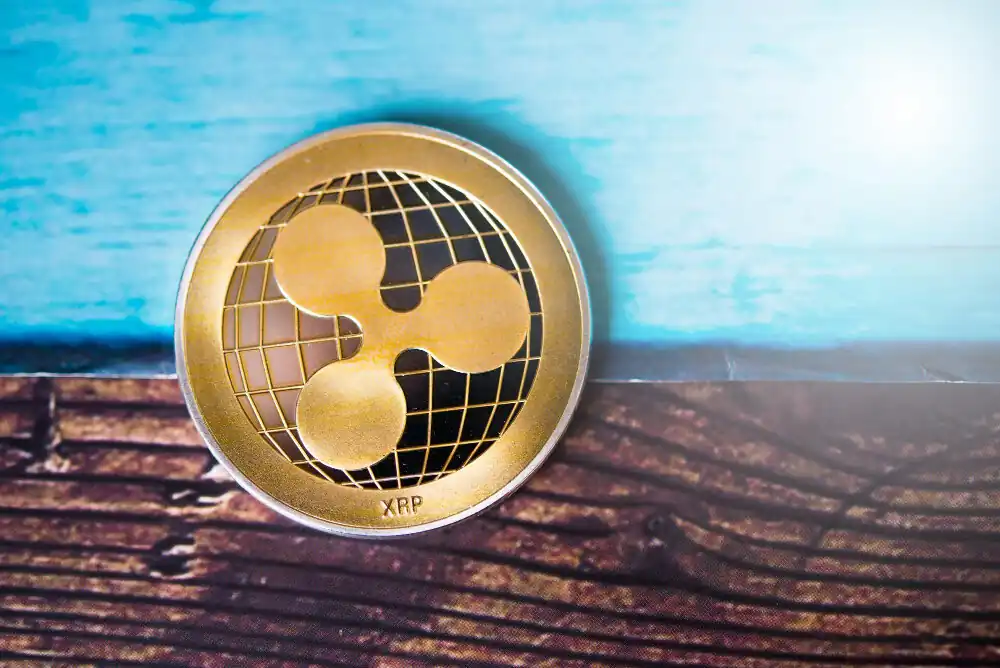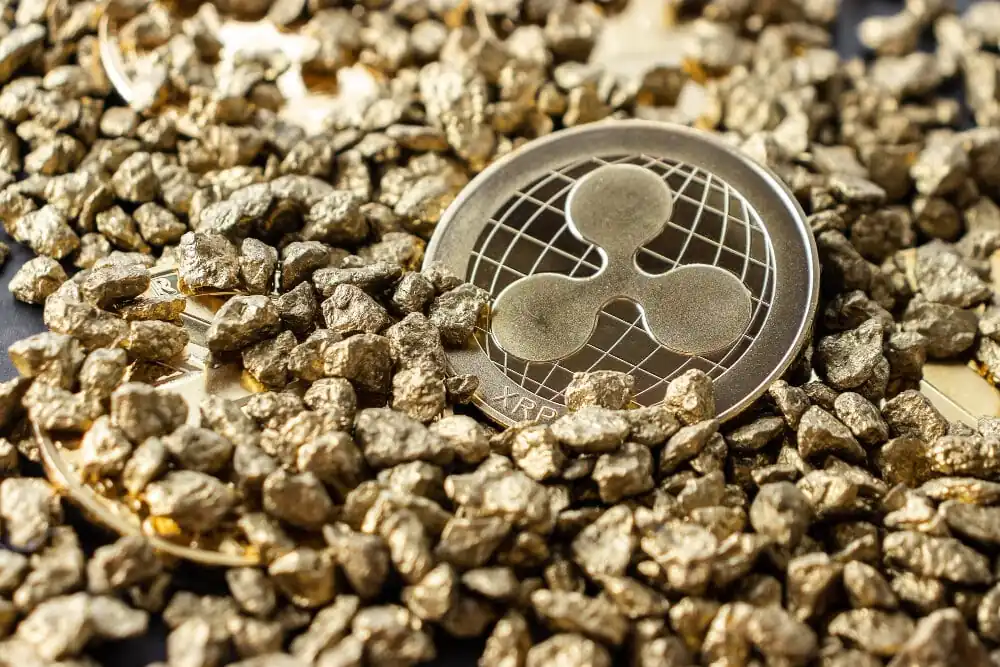In this article, we will explore and provide a clear understanding of what Is XRP? Innovative cryptocurrency, has been a game-changer in finance, offering secure, instantaneous, and cost-effective global transactions. Join us as we unravel the intricacies, exploring its origins, functionalities, and impact on the evolving landscape of digital currencies. Get a clear understanding and its unique position in the blockchain revolution, whether you're a beginner or not.
What is XRP?
A real-time gross settlement system and remittance network, a US-based tech company, has been a transformative force in global finance since its launch in 2012. Operating on an open-source protocol, Ripple provides a versatile platform for various value representations, from fiat currency to cryptocurrencies, commodities, and unconventional units like frequent flier miles. At the core of Ripple's functionality is its native cryptocurrency, designed to facilitate secure, instant, and nearly free global financial transactions of any magnitude, eliminating the risk of chargebacks. Despite its innovative approach, this company faced legal challenges in December 2020 when the SEC sued the company and two executives for allegedly selling Crypto as unregistered securities. However, the regulatory landscape saw a significant development in July 2023 when the court ruled that XRP, as a digital token, does not meet the Howey requirements of an investment contract, providing clarity in this legal context. Consider our comprehensive article for a more in-depth exploration of XRP's potential and the evolving regulatory environment.
What Is XRP 2.0?
This version represents a significant advancement in the digital currency landscape, building upon the strengths of its predecessor with notable improvements in functionality, scalability, and adaptability. Guided by Ripple, the force behind this crypto, this upgraded version addresses challenges with innovative features and enhanced protocols, placing a renewed emphasis on speed, efficiency, and security. This version aims to streamline cross-border transactions, providing users a faster and more cost-effective alternative to traditional banking systems. This stability underscores the cryptocurrency's resilience and market position, contributing to the overarching narrative of continuous development and potential for growth. In the ever-evolving digital currency sphere, this version is a robust contender, meeting user demands and solidifying its role in this dynamic landscape.
What Is a Bridge Currency?
A bridge currency is an intermediary in financial transactions, facilitating value exchange between two different currencies or assets. Think of it as a connective tissue in global finance, enabling seamless transactions between parties that may not directly deal in the same currency. The primary purpose of a bridge currency is to mitigate the challenges of direct currency exchange, acting as a universal medium that transcends borders. In cryptocurrency, digital assets like XRP have gained recognition for their role as efficient bridge currencies, offering rapid and cost-effective cross-border transactions by serving as a bridge between various fiat currencies. This concept enhances the speed of transactions and minimizes the need for multiple intermediaries, making it an instrumental component in the evolution of modern financial ecosystems.
How Many XRP Are There?
The total supply of this crypto, the native cryptocurrency, is capped at 100 billion tokens. This fixed supply distinguishes XRP from cryptocurrencies involving mining processes like Bitcoin. At the inception this company received 80 billion Crypto, intending to support the currency's development and market liquidity. Ripple consistently sells Crypto over time to enhance market dynamics. Over half of the total supply is already in circulation, with the rest held by Ripple Labs. This supply dynamic plays a role in the cryptocurrency's stability and predictability in the market. It's worth staying updated on any developments in the distribution, as the cryptocurrency market is dynamic and subject to changes.
Price History
Exploring the XRP price history provides crypto investors with essential insights for strategic decision-making. The historical trajectory reveals notable milestones, including a peak exceeding $3.84 in January 2018 and an all-time low in July 2014, offering a remarkable profit margin of 21,755%. Understanding XRP's tokenomics, with a fixed supply of 99.99 billion and approximately 53.7 billion in circulation, adds depth to investment considerations. Historical XRP data finds practical application in technical analysis for trading strategies, predictive analysis for anticipating market trends, risk and portfolio management, and training trading bots. Candlestick charts visually represent price movements, aiding technical analysts in strategic decision-making. Historical XRP data is a crucial tool for navigating the dynamic cryptocurrency landscape, empowering users to make informed choices based on past market performance.
History
In early 2011, computer engineers David Schwartz, Jed McCaleb, and Arthur Britto delved into Bitcoin but were fueled by the ambition to create a more sustainable value transfer system devoid of mining complexities. Their vision materialized in June 2012 with the launch of the Ledger. Joined by angel investor Chris Larsen, they formed NewCoin, later renamed OpenCoin, ultimately settling on the moniker Ripple. Co-founder Jed McCaleb departed in 2014 to create Stellar (XLM), receiving 9 billion Crypto as acknowledgement for his role. Post-exit, he disclosed selling his holdings. The initial network comprised the Consensus Ledger, Transaction Protocol, Ripple Network, and XRP cryptocurrency, which evolved into the unified RippleNet. Following the Ledger version launch, developers allotted 80 billion tokens to Ripple, sold gradually to boost liquidity and foster robust markets. In 2020, this Foundation emerged as an independent nonprofit, raising $6.5 million to establish a crypto Community Fund and enhance Ledger infrastructure. Supported by grants from Coil, Gatehub, the foundation expanded its role, fostering a thriving Ledger network. Integral to the ecosystem, the foundation ensures a secure and prosperous environment for developers. Like hundreds of other cryptocurrenciesaround the globe, this Crypto is built on cutting-edge technology in blockchain and social initiatives while maintaining trusted validators to uphold an efficient and dynamic open-source ecosystem in line with the ethos of technology.
Is Ripple Safe?
As a blockchain-based platform, prioritizes security measures to ensure the safety of its users and the cryptocurrency. According to various reports, the Ledger boasts a robust security track record, with no significant breaches reported. Additionally, using cryptographic techniques in the crypto protocol contributes to the overall security of transactions on the network. However, it's essential to note that no system is entirely impervious to risks, and the cryptocurrency space is no exception. This company has faced legal challenges in the past, notably in December 2020 when the U.S. Securities and Exchange Commission (SEC) filed a lawsuit against Ripple Labs, alleging the sale of XRP as unregistered securities. While legal matters can impact the perception of safety in the crypto space, users must stay informed about regulatory developments.
How Can I keep My XRP Safe?
Ensuring the security of your holdings is paramount in the unpredictable world of cryptocurrencies. To safeguard your Crypto, consider storing them in a reputable and secure wallet. Our Wallet is a reliable choice for crypto enthusiasts, offering robust security features to protect your digital assets. Regarding personal practices, employing two-factor authentication (2FA) adds an extra layer of defence, preventing unauthorized access to your wallet. Keeping your private keys offline and secure is crucial, minimizing the risk of hacking. Stay vigilant against phishing attempts and only use secure and reputable cryptocurrency exchanges. Regularly update your wallet software to benefit from the latest security enhancements. By leveraging trusted platforms like Our Platform and implementing these measures, you can enhance the safety of your Crypto holdings and navigate the crypto space with greater peace of mind.
Will Banks Use XRP?
The adoption by banks is a topic that has generated considerable interest within the cryptocurrency community. Ripple, has positioned itself as a solution for facilitating faster and more cost-effective cross-border transactions for financial institutions. While some partnerships and pilot programs have been initiated, widespread adoption by banks remains gradual. Factors such as regulatory clarity and risk considerations play pivotal roles in influencing banks' decisions to integrate this Crypto into their operations. Several banks globally have shown interest in Ripple's technology, with notable European and Asian partnerships. However, the pace and extent of adoption are subject to various factors, and staying informed about industry developments is essential for assessing trajectory integration into the traditional banking sector.
XRP SEC Lawsuit Update Today
The U.S. Securities and Exchange Commission (SEC) has decided to drop its claims against Ripple Labs CEO Brad Garlinghouse and co-founder Chris Larsen in the ongoing lawsuit alleging violations of U.S. securities law. The SEC initially accused this Company of conducting an unregistered security offering by selling Crypto, totaling over $1.3 billion. While a partial win was granted to the Company in July, stating that XRP sales on public exchanges weren't unregistered securities offerings, the SEC's claims against Garlinghouse and Larsen were still set for a jury trial. This recent development suggests a shift in the SEC's strategy, potentially aiming to expedite the legal proceedings, and marks another development in Ripple's legal battle over the regulatory status of XRP.

Where to Buy XRP UK?
Are you ready to dive into the world of cryptocurrency? Opening an account is your gateway to a variety of cryptocurrency services and financial possibilities. Here's a straightforward guide on how to get started
First you need to open an account in Plasbit
Click on "Get Started": To initiate the process of creating a new account, simply click on the "Get Started" option. This action will guide you to the registration process.
Register in Page:You will be redirected to the Register page, where you'll be prompted to provide essential details to set up your account.
Enter Your Email:In the designated field, enter your email address. Ensure the accuracy of the email you provide, as it will be your primary contact for communication and verification purposes.
Create a Secure Password: Security is a top priority at Plasbit. Your password must meet specific criteria to ensure its strength. It should consist of at least 8 characters, including at least one uppercase letter, one lowercase letter, one number, and one special character. Take your time to create a strong and memorable password.
Click "Continue": After entering your email and password, click the "Continue" button to proceed to the next step.
Verify Your Email:To ensure the security of your account and verify your identity, Platform will send a verification link to the email address you provided during registration.
Check Your Inbox:Open your email inbox (the one you used for registration) and look for an email from the Platform. This email will contain a verification link. Click on the link to verify your email address.
Dashboard: Once you have successfully verified your email, you will gain access to your dashboard. On the left side of the dashboard, you will find various options, including "Wallet," "Cards," "Wires," "Transactions," and "Deposit."
Wallet: This section allows you to manage your cryptocurrency holdings.
Cards: Explore options related to cards, which may include debit cards or other financial services.
Wires: Access wire transfers and related banking services. Transactions: Keep track of your transaction history.
Deposit: Find options for depositing funds into your account.
Then to buy XRP you need to follow these steps
Step 1: Deposit funds using your preferred payment method, whether a bank transfer, credit card, or other supported options.
Step 2: Once your account is funded, navigate to exchangemarkets on the platform.
Step 3: Choose the amount of Crypto you want and place your order.
Step 4: After your purchase, securely store your Crypto by transferring it to the wallet for added security, providing a haven for your digital assets.
This is a comprehensive guide to acquiring XRP in the UK, where innovation meets accessibility in the exciting world of Ripple.
In conclusion, Plasbit is dedicated to providing you with a secure and user-friendly crypto experience for your trading endeavors.
The Future
With its transformative capabilities, Ripple has the potential to revolutionize international payments and remittances, serving as a disruptor in the traditional banking and financial system. Beyond merely replacing the SWIFT network, influence extends to providing swift and cost-effective transactions. In a strategic move towards impacting the financial industry at an enterprise level, they has implemented policies and measures targeting enterprises and financial institutions rather than retail customers. In 2019, the company introduced a groundbreaking "Liquidity Hub" for enterprise clients seeking to delve into crypto trading. This hub facilitates access to diverse digital assets from various providers, including exchanges, market makers, and over-the-counter (OTC) trading desks. They have further enhanced its offerings by providing access to aggregated liquidity pools and optimizing pricing through sales and OTC desks. Ripple has ventured into decentralized finance (DeFi), non-fungible tokens (NFTs), and the metaverse to adapt to the evolving landscape of the cryptocurrency market. This ecosystem is actively developing projects for NFT issuance, intelligent contract implementation, and the creation of federated sidechains, fostering seamless integration with other platforms. Notably, they have initiated a creator fund, allocating $250 million to assist NFT creators in minting their projects onto the XRP Ledger, demonstrating a robust commitment to industry innovation. As central banks worldwide progress toward testing and launching central bank digital currencies (CBDCs), they have positioned itself as a seasoned developer of CBDC applications. This strategic positioning aligns goal to drive the implementation and adoption of these new monetary tools. Based on an advanced ledger, platform for minting, managing, transacting, and destroying CBDCs reinforces its standing as a comprehensive solution. This capability addresses the needs of banks, financial institutions, and governments in managing payment transfers. However, future adoption and success hinge significantly on the outcome of the ongoing SEC verdict, with the timeline for resolution remaining uncertain. Despite this regulatory uncertainty, they proactive initiatives and innovative projects underscore its commitment to reshaping the financial landscape and embracing the transformative potential of blockchain technology.







